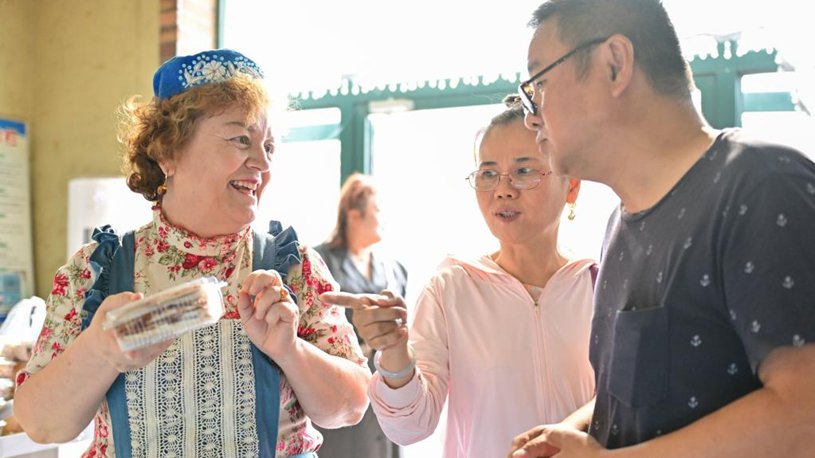BEIJING, July 29 (Xinhua) - Imagine birds soaring, flowers blooming, and streams flowing, all within a digital panorama. As the holographic "scroll" unfolds, "Dwelling in the Fuchun Mountains," a masterpiece from over 600 years ago, comes to life in a 5-meter high and 40-meter long display at the Zhejiang Provincial Museum in Hangzhou.
"I've visited many museums, but this experience is unlike anything I've ever seen. It's as if I've stepped into the painting itself," a visitor surnamed Chen remarked, captivated by the experience.
This immersive digital exhibition is just one example of how China's museums are innovating. These institutions are redefining the visitor experience by integrating technologies such as digital twins, virtual reality (VR), and naked-eye 3D. Visitors can "return" to historical places and interact with ancient civilizations as if they were present.
Visitors to the digital Dunhuang immersive exhibition hall in the Mogao Caves in northwest China's Gansu Province can wear VR glasses to "enter" the caves, and "travel" back over 1,400 years to experience the exquisite world of murals.
Mogao Cave 285, which is usually closed to the public, is now welcoming visitors in this innovative way.
This early cave, excavated during the Western Wei dynasty, boasts well-preserved murals that vividly illustrate the exchange and integration of Chinese and Western cultures. It stands as a prominent representative of the Dunhuang's cave art and cultural heritage.
The Dunhuang Academy, in collaboration with Chinese Internet giant Tencent, used 3D modeling and VR to create a 1:1 high-precision digital replica of Cave 285, complete with a high-fidelity model with ultra-high-resolution surface colors.
Wearing VR equipment allows visitors to closely inspect murals, explore cave details in 360 degrees, and even "ascend" to the cave's ceiling to immerse themselves in the mural narrative.
Leveraging these technologies to rejuvenate ancient caves provides a truly sustainable approach to the cultural heritage preservation and revitalization, said Zhang Yati, an excutive of Tencent.
While VR technology submerges individuals in a completely artificial digital realm, augmented reality (AR) technology integrates virtual components with the tangible world, offering visitors a harmonious blend of virtual and physical experiences.
Visitors at the Chengdu Museum in southwest China's Sichuan Province, who wear AR glasses and stand in front of an exhibit, will see pop-up images, descriptions, and video explanations of the exhibit.
By downloading a specific app to their smartphones, visitors can utilize an AR navigation tool that projects virtual routes onto the real-world map, ensuring a swift and intuitive journey to their destinations.
The app even offers virtual tour guides at select locations. By simply scanning selected content, visitors can "invoke" a virtual guide who will offer detailed insights and explanations about the exhibits that capture their curiosity.
Beyond innovative display and interaction methods, many museums across the country have recently embraced technologies like the metaverse and digital twinning to create immersive online museums that are accessible via websites and mini-programs.
The Xi'an Museum, in northwest China's Shaanxi Province, collaborated with an internet company to create a metaverse 3D interactive space inspired by the museum's renowned collection "Wangchuan Villa," a celebrated Chinese painting depicting the picturesque private estate of Tang Dynasty poet Wang Wei, with real-time cloud rendering, generative AI, and 3D high-definition modeling technologies.
By accessing the online metaverse space through their smartphones or computers, visitors can step into the roles of characters from the "Wangchuan Villa" and embark on a deeply engaging journey through the landscapes.
With each new scene they encounter, the digital environment will reveals detailed narratives and Wang Wei's poetic verses, offering a multisensory exploration of his artistic legacy. ■












